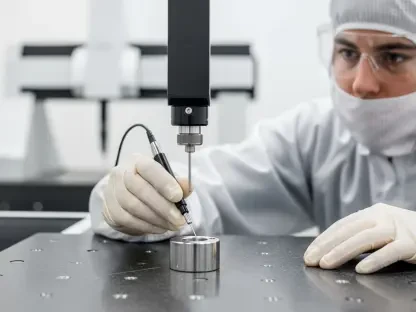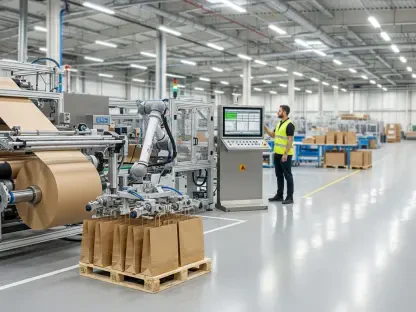In the fast-evolving landscape of industrial production, a staggering statistic emerges: additive manufacturing technologies are projected to reduce material waste by up to 90% compared to traditional methods, and among these innovations, Cold Spray Additive Manufacturing (AM) stands out as a game-changer. Offering unprecedented versatility and sustainability, this roundup dives into the transformative power of Cold Spray AM, gathering opinions, tips, and reviews from various industry perspectives to uncover how this technology is reshaping manufacturing across sectors like aerospace, energy, and healthcare. The purpose is to provide a comprehensive overview of its capabilities, challenges, and potential through diverse expert insights.
Unveiling the Impact of Cold Spray AM: Industry Perspectives
Cold Spray AM has transitioned from a niche experimental process to a robust industrial solution, capturing the attention of manufacturers worldwide. Industry leaders highlight its unique ability to deposit materials at high velocities without the need for heat-intensive treatments, preserving material properties and enhancing efficiency. This perspective emphasizes the technology’s role as a sustainable alternative, particularly in high-stakes environments where precision and durability are paramount.
Differing views exist on the pace of adoption, with some sectors praising its immediate applicability in repair and maintenance tasks. Others caution that broader implementation requires overcoming technical barriers, such as equipment costs and specialized training. These contrasting opinions underscore a shared recognition of Cold Spray AM’s potential, tempered by practical considerations of scalability and integration into existing workflows.
A common thread among insights is the technology’s alignment with global sustainability goals. Experts across the board note that minimizing energy consumption and material waste positions Cold Spray AM as a cornerstone for eco-friendly production. This consensus points to growing momentum for its use, even as debates continue over the best strategies for widespread deployment.
Key Innovations and Impacts: A Cross-Industry Analysis
Material Mastery: Strength and Versatility in Focus
One widely discussed advantage of Cold Spray AM is its ability to process an extensive range of materials, including copper, aluminum alloys, and nickel, with exceptional ductility using nitrogen gas. Industry feedback consistently highlights how this capability eliminates the need for post-processing heat treatments, resulting in stronger, fatigue-resistant components. Such properties are seen as critical for applications demanding high performance under stress.
Insights from various manufacturing hubs reveal specific examples, such as enhanced crack prevention in as-sprayed states, which traditional methods often struggle to achieve. However, challenges remain, particularly with handling complex alloys like C-103 niobium, previously considered unsprayable. Some perspectives stress the need for continued research into high-pressure techniques to expand material possibilities, while others argue that current capabilities already outpace conventional alternatives.
Scalability remains a point of contention among industry voices. While some advocate for rapid integration into mainstream production, citing data-driven improvements in material performance, others warn of the complexities involved in adapting Cold Spray AM for large-scale operations. This divergence of thought illustrates the technology’s promise alongside the hurdles that must be addressed for universal acceptance.
Hybrid Solutions: Tackling Industrial Challenges
Cold Spray AM’s capacity to create hybrid structures, such as joining dissimilar metals like copper and aluminum for heat sinks and busbars, garners significant praise for reducing corrosion and streamlining production. Feedback from industrial innovators points to the elimination of soldering as a major efficiency boost, particularly in high-volume manufacturing settings. This approach is often cited as a superior alternative to traditional joining techniques.
Real-world applications further fuel enthusiasm, with examples like composite coatings for wear resistance in automotive brake systems drawing attention for their environmental benefits, such as emission reductions. Collaborations in aerospace for spacecraft components also receive mention as evidence of the technology’s adaptability. Yet, some industry observers note that adoption costs and the learning curve for technical mastery pose barriers to smaller enterprises.
Competitive advantages are clear, but risks are acknowledged as well. Certain perspectives emphasize that while hybrid solutions offer innovation, the upfront investment in equipment and expertise can deter widespread use. This balanced view suggests that while Cold Spray AM excels in specialized applications, strategic planning is essential to mitigate financial and operational challenges for broader implementation.
Pioneering Applications: From Aerospace to Medical Frontiers
The application of Cold Spray AM in high-stakes fields like aerospace and healthcare sparks considerable discussion among industry professionals. Its use in creating dense tungsten coatings for fusion reactor walls and titanium-porous coatings for bio-implants that exceed stringent regulatory standards is frequently lauded. These advancements are viewed as proof of the technology’s readiness for critical, life-impacting sectors.
Sector-specific dynamics reveal varied adoption rates, with aerospace pushing boundaries through components like rocket nozzles, while medical applications gain traction for their precision in implant production. Some insights suggest that regional differences influence uptake, with certain areas prioritizing energy solutions over healthcare innovations. Future growth in these fields is seen as inevitable, though timelines differ based on local industrial priorities.
Challenging the perception of Cold Spray AM as merely experimental, many industry voices present compelling evidence of its integration into mainstream production. Case studies of successful deployments in maintenance and part repair bolster this argument, positioning the technology as a practical, not just theoretical, solution. This shift in narrative reflects a maturing confidence in its transformative role across diverse applications.
Sustainability and Scalability: Shaping a New Paradigm
A strong consensus emerges around Cold Spray AM’s contribution to sustainable manufacturing by cutting down on material waste and avoiding energy-heavy processes. Environmental advocates within the industry stress that this alignment with global green initiatives makes the technology a vital tool for future-proofing production. Such views often frame it as a necessary evolution in industrial practices.
Comparisons with traditional manufacturing methods highlight significant advantages in efficiency, though some perspectives caution that scalability requires substantial infrastructure investment. Speculative insights suggest that over the next few years, from 2025 onward, a shift toward hybrid models combining Cold Spray AM with conventional techniques could bridge existing gaps. This forward-looking analysis points to a gradual but impactful industry transformation.
Adding depth to the conversation, various opinions explore how Cold Spray AM balances niche innovation with practical, large-scale solutions. The technology is often described as a bridge between cutting-edge research and everyday industrial needs, offering a fresh perspective on progress. This duality is seen as a key driver in reshaping manufacturing standards for long-term sustainability.
Key Takeaways: Leveraging Cold Spray AM for Strategic Growth
Summarizing the diverse insights, Cold Spray AM offers standout benefits like unparalleled material versatility, innovative hybrid solutions, and groundbreaking applications in critical industries. Feedback consistently points to its ability to enhance component strength and reduce environmental impact as primary reasons for adoption. These advantages position it as a competitive tool for forward-thinking manufacturers.
Strategic recommendations for businesses include investing in specialized training to master high-pressure processes essential for optimal results. Partnerships with technology providers for tailored applications also emerge as a recurring tip, ensuring access to the latest advancements. These steps are seen as crucial for companies aiming to stay ahead in a rapidly changing industrial landscape.
Practical integration advice focuses on starting with smaller-scale projects, such as repair applications, to test feasibility before committing to full production overhauls. Piloting hybrid material initiatives is another suggested approach, allowing firms to evaluate performance without significant risk. Such actionable guidance reflects a collective understanding of how to harness Cold Spray AM effectively.
Final Reflections: Next Steps for Industry Innovators
Looking back, the roundup of perspectives on Cold Spray AM revealed a dynamic tapestry of optimism and caution that shaped the discourse throughout the industry. The discussions underscored a technology that bridges sustainability with high-performance outcomes, leaving a lasting impression on manufacturing’s trajectory.
For actionable next steps, manufacturers are encouraged to explore pilot programs that test Cold Spray AM in controlled settings, focusing on specific pain points like material waste or production inefficiencies. Collaborating with research institutions to push material boundaries offers another pathway to innovation, ensuring that practical challenges are met with cutting-edge solutions.
Beyond immediate actions, the broader consideration is how Cold Spray AM could redefine industrial standards over time. By prioritizing adaptability and continuous learning, companies position themselves to not only keep pace with technological advancements but also drive them, setting a new benchmark for what manufacturing can achieve.









